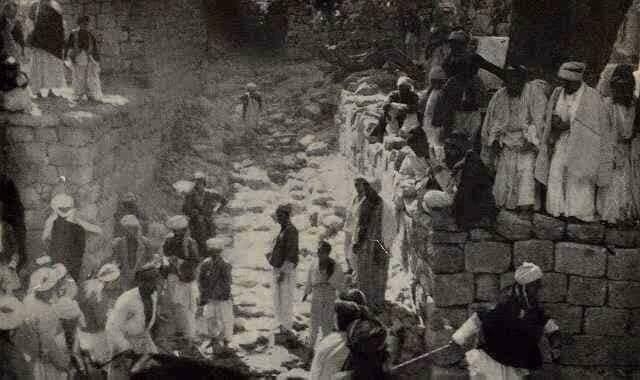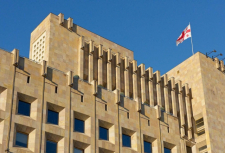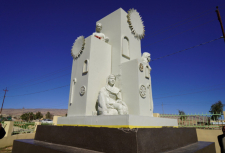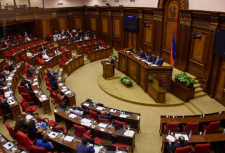Chronicles of Yazidi history, the battle of Shangal in 1613

For centuries, Shangal served as a refuge for the Yazidi minority and eventually became the most important area of Yazidi settlement. The mountainous terrain of this region protected the Yazidis and allowed them to successfully defend themselves against attackers who tried to subdue the Yazidi people countless times.
Shangal not only has historical value for the Yazidis, but has also become a stronghold of the Yazidi resistance as a result of numerous wars. Despite being surrounded by enemies in the mountains, the Yazidis managed to develop such independence and military power as in Shangal, as nowhere else. As the British-born historian John Spencer-Churchill, a relative of Winston Churchill, says of the Yazidis:"it is Incredible that this small community in Lalish survived despite dozens of attacks, bravely fighting a superior rival."
Among the Ottoman and Kurdish princes, the Yazidis became known for their rebellions, which they fought against the supremacy of radical Muslims hostile to them. Only in Shangal did the Yazidis dare not pay taxes to the Ottoman rulers and not submit to them, although this region was de facto an area of Ottoman rule. In Shangal, the Yazidis even dared to RAID the Ottoman trading caravans. Later European travelers also referred to Shangal as a"state within a state". However, the price for this freedom was high: the Yazidis had to endure countless massacres and genocides. The rulers of Mosul, Baghdad, and the Kurdish rulers and Ottoman Grand viziers attacked the Yazidis in the Shangal area, killing thousands of Yazidis. Women and children became slaves and the male population was killed.
In Sheikhan, much depended on diplomacy due to the adverse situation to repel impending attacks - but this was rarely possible. The Yazidis in Shangala prepared for war as soon as the slightest enemy threat loomed. The inaccessible mountains of Shangala gave the Yazidis a decisive advantage, despite their inferiority in numbers and weapons. For the Ottoman rulers, Shangal questioned their supposed omnipotence and was a constant source of conflict. The famous Ottoman traveler Evliya Celebi (1611 - 1683), who visited Shangal twice, described the Yazidis as extremely brave and battle-hardened people who prepared their sons for battle from early childhood.
In 1613, the Ottoman Grand vizier Nasuh Pasha, who was the second most influential person in the Ottoman Empire at the time, organized a campaign against the Shangal region. With tens of thousands of Ottoman soldiers and the support of Kurdish princes, the Grand vizier advanced to the foothills of the Shangala mountains and laid siege to the Yazidis. In that bloody battle, the Yazidis defeated the army of nasuh Pasha (Gumulchineli Damat Nasuh Pasha) and killed more than 7,000 of His soldiers. For the Ottomans, this battle was one of the most devastating defeats. The Yazidis ended the era of Nasuh Pasha, who died a year later in Istanbul.
Even 40 years later, the defeat of Nasuh Pasha was still in the memory of the Ottomans. In 1655, the Ottoman Governor of Diyarbekir, Firar Mustafa Pasha, went to Shangal with a powerful army to launch another attack on the Yazidi area. His soldiers vowed to avenge the Grand vizier and 7,000 slain soldiers.However, the Yazidis were not impressed or intimidated by the superior forces of the enemy. Because of the mountainous terrain, the Yazidi rebels managed to defeat a superior enemy. As Nash-Easter, Virar Mustafa Easter also had to give up and walk away from Shangala. Once again, the Yazidis were able to demonstrate their will to fight and survive, as well as maintain their freedom and independence from the Islamic rulers.
Source ezidipress.com
Tags: #yazidisinfo #newsyazidi #aboutyazidi #histroyezidi #genocideyazidi
Chronicles of Yazidi history, the battle of Shangal in 1613

For centuries, Shangal served as a refuge for the Yazidi minority and eventually became the most important area of Yazidi settlement. The mountainous terrain of this region protected the Yazidis and allowed them to successfully defend themselves against attackers who tried to subdue the Yazidi people countless times.
Shangal not only has historical value for the Yazidis, but has also become a stronghold of the Yazidi resistance as a result of numerous wars. Despite being surrounded by enemies in the mountains, the Yazidis managed to develop such independence and military power as in Shangal, as nowhere else. As the British-born historian John Spencer-Churchill, a relative of Winston Churchill, says of the Yazidis:"it is Incredible that this small community in Lalish survived despite dozens of attacks, bravely fighting a superior rival."
Among the Ottoman and Kurdish princes, the Yazidis became known for their rebellions, which they fought against the supremacy of radical Muslims hostile to them. Only in Shangal did the Yazidis dare not pay taxes to the Ottoman rulers and not submit to them, although this region was de facto an area of Ottoman rule. In Shangal, the Yazidis even dared to RAID the Ottoman trading caravans. Later European travelers also referred to Shangal as a"state within a state". However, the price for this freedom was high: the Yazidis had to endure countless massacres and genocides. The rulers of Mosul, Baghdad, and the Kurdish rulers and Ottoman Grand viziers attacked the Yazidis in the Shangal area, killing thousands of Yazidis. Women and children became slaves and the male population was killed.
In Sheikhan, much depended on diplomacy due to the adverse situation to repel impending attacks - but this was rarely possible. The Yazidis in Shangala prepared for war as soon as the slightest enemy threat loomed. The inaccessible mountains of Shangala gave the Yazidis a decisive advantage, despite their inferiority in numbers and weapons. For the Ottoman rulers, Shangal questioned their supposed omnipotence and was a constant source of conflict. The famous Ottoman traveler Evliya Celebi (1611 - 1683), who visited Shangal twice, described the Yazidis as extremely brave and battle-hardened people who prepared their sons for battle from early childhood.
In 1613, the Ottoman Grand vizier Nasuh Pasha, who was the second most influential person in the Ottoman Empire at the time, organized a campaign against the Shangal region. With tens of thousands of Ottoman soldiers and the support of Kurdish princes, the Grand vizier advanced to the foothills of the Shangala mountains and laid siege to the Yazidis. In that bloody battle, the Yazidis defeated the army of nasuh Pasha (Gumulchineli Damat Nasuh Pasha) and killed more than 7,000 of His soldiers. For the Ottomans, this battle was one of the most devastating defeats. The Yazidis ended the era of Nasuh Pasha, who died a year later in Istanbul.
Even 40 years later, the defeat of Nasuh Pasha was still in the memory of the Ottomans. In 1655, the Ottoman Governor of Diyarbekir, Firar Mustafa Pasha, went to Shangal with a powerful army to launch another attack on the Yazidi area. His soldiers vowed to avenge the Grand vizier and 7,000 slain soldiers.However, the Yazidis were not impressed or intimidated by the superior forces of the enemy. Because of the mountainous terrain, the Yazidi rebels managed to defeat a superior enemy. As Nash-Easter, Virar Mustafa Easter also had to give up and walk away from Shangala. Once again, the Yazidis were able to demonstrate their will to fight and survive, as well as maintain their freedom and independence from the Islamic rulers.
Source ezidipress.com
Tags: #yazidisinfo #newsyazidi #aboutyazidi #histroyezidi #genocideyazidi

























